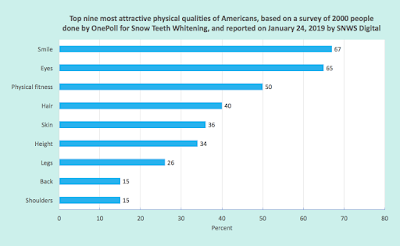On January 4, 2019 at
Inc. there was
an article by Carmine
Gallo titled
Public speaking is no longer a ‘soft skill.’ It’s your key to
success in any field. A section on
The Growing Value of Changing Minds began:
“In a world built on ideas, the persuaders – the ones who
can win hearts and change mind – have a competitive edge. I’ve spoken to
economists and historians like Deidre McCloskey at the University of Illinois,
Chicago. She conducted an impressive research project to prove that old
fashioned rhetoric – persuasion – is responsible for a growing share of America’s
national income.
McCloskey analyzed 250 occupations covering 140 million
people in the U.S. She created a statistical model based on the amount of time
people in each category spent on public speaking and persuading another person
to take action. In some cases persuasion played a more limited role than others
(think firefighters versus public relations specialists).
McCloskey reached the following conclusion: Persuasion is
responsible for generating one-quarter of America’s total national income. She
expects it to rise to 40 percent over the next twenty years. McCloskey’s research
was taken up by another economist in Australia who reached a similar
conclusion.”
The Australian economist was Gerry Antioch, who discussed
his research on the percentage of the Gross Domestic Product (GDP) in
an
article from 2013 in issue 1 of
Economic Roundup titled
Persuasion is now 30
per cent of US GDP (revisiting McCloskey and Klamer after a quarter of a
century). That earlier
article by McCloskey and Klamer was published in the May
1995 issue of
The American Economic review on pages 191 to 195 and titled
One
Quarter of GDP is Persuasion. Table 1 of Antioch’s article shows the details of
McCloskey and Klamer’s “inspired guesstimate,” of 26% for 1993 - which actually
includes just 21 of those 250 occupations. There were four categories with
weights of 1.00 (4 occupations), 0.75 (9 occupations), 0.50 (6 occupations),
and 0.25 (2 occupations). They also made estimates from data for the years
1983, 1988, and 1991. Antioch made estimates for 2003 and 2009.


The first bar chart shown above presents the percentages for
persuasion from all six estimates. A second bar chart restates them in current
dollars
based on GDP. A
press release on November 16, 2015 from the
Association
of National Advertisers reported that research sponsored by them found that
advertising alone contributed 19% to the U.S. GDP in 2014, or $3.4 trillion.
How much of these percentages or dollars can be attributed just
to either storytelling or public speaking? Back in 2002 Stephen Denning
published an article in the RSA Journal titled How storytelling ignites action
in knowledge-era organizations in which he guessed storytelling made up
two-thirds of persuasion. Then on page xvi of his 2005 book The Leader’s Guide
to Storytelling he said it conservatively was at least half of persuasion. In their 2014 book Business Storytelling for
Dummies Karen Dietz and Lori Silverman mention Denning’s 2005 book and link to
Antioch’s article.

What about public speaking? Page 324 in Chapter 15 of Stephen
Lucas’s book
The Art of Public Speaking (10th edition, 2008) just mentions the
26% persuasion estimate as being from a
Wall Street Journal version of a
January 10, 1995
Associated Press article about McCloskey and Klamer by Amanda Bennett titled
Economists
+ Meeting A Zillion Causes and Effects. If Stephen Denning can guess a half for
storytelling, than I can take a wild guess of a fifth for persuasive public speaking, and
come up with the dollar estimates shown above in a third bar chart. So, it might be over $912 billion!

































